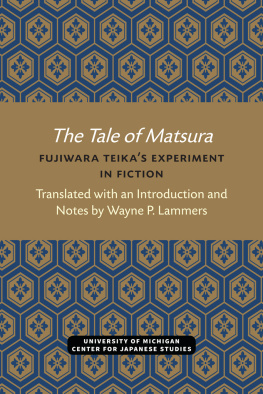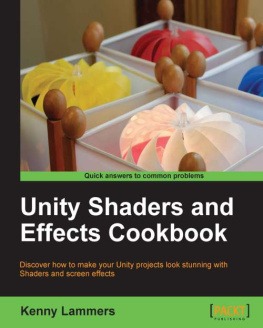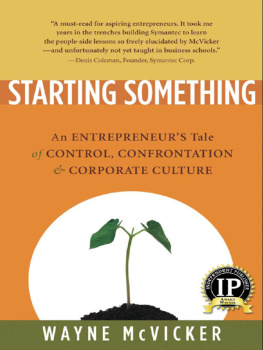Wayne P. Lammers - The Tale of Matsura
Here you can read online Wayne P. Lammers - The Tale of Matsura full text of the book (entire story) in english for free. Download pdf and epub, get meaning, cover and reviews about this ebook. year: 2020, publisher: University of Michigan Center for Japanese Studies, genre: Detective and thriller. Description of the work, (preface) as well as reviews are available. Best literature library LitArk.com created for fans of good reading and offers a wide selection of genres:
Romance novel
Science fiction
Adventure
Detective
Science
History
Home and family
Prose
Art
Politics
Computer
Non-fiction
Religion
Business
Children
Humor
Choose a favorite category and find really read worthwhile books. Enjoy immersion in the world of imagination, feel the emotions of the characters or learn something new for yourself, make an fascinating discovery.
- Book:The Tale of Matsura
- Author:
- Publisher:University of Michigan Center for Japanese Studies
- Genre:
- Year:2020
- Rating:4 / 5
- Favourites:Add to favourites
- Your mark:
- 80
- 1
- 2
- 3
- 4
- 5
The Tale of Matsura: summary, description and annotation
We offer to read an annotation, description, summary or preface (depends on what the author of the book "The Tale of Matsura" wrote himself). If you haven't found the necessary information about the book — write in the comments, we will try to find it.
The Tale of Matsura — read online for free the complete book (whole text) full work
Below is the text of the book, divided by pages. System saving the place of the last page read, allows you to conveniently read the book "The Tale of Matsura" online for free, without having to search again every time where you left off. Put a bookmark, and you can go to the page where you finished reading at any time.
Font size:
Interval:
Bookmark:

The Tale of Matsura
Michigan Monograph Series in Japanese Studies, Number 9
Center for Japanese Studies
The University of Michigan
The Tale of Matsura
Fujiwara Teikas Experiment in Fiction
Translated with an Introduction and Notes
by Wayne P. Lammers
Ann Arbor
Center for Japanese Studies
The University of Michigan
1992
Open access edition funded by the National Endowment for the Humanities/Andrew W. Mellon Foundation Humanities Open Book Program.
1992 by the Center for Japanese Studies, The University of Michigan, 108 Lane Hall, Ann Arbor, MI 48109
The paper used in this publication meets the requirements of the ANSI Standard Z39.48-1984 (Permanence of Paper).
Library of Congress Cataloging-in-Publication Data
Matsura no Miya monogatari. English
The tale of Matsura: Fujiwara Teikas experiment in fiction / translated with an introduction and notes by Wayne P. Lammers.
p. cm.(Michigan monograph series in Japanese studies ; no. 9)
Translation of: Matsura no Miya monogatari.
Includes bibliographical references and index.
ISBN 0-939512-48-3 (alk. paper)
I. Fujiwara, Sadaie, 1162-1241. II. Lammers, Wayne P., 1951-. III. Title. IV. Series. PL790.M34E5 1992
895.6322dc20
90-42197
CIP
A Note on the Type
This book was set in Caslon 540, a modern adaptation of a type designed by William Caslon (1692 1766), greatest of English letter founders. The Caslon face, an artistic, easily read type, has enjoyed two centuries of ever-increasing popularity in our own country. The first copies of the Declaration of Independence and the first paper currency distributed to the citizens of the newborn nation were printed in this type face.
Book design by Lisa Jacobs
Composed by The Composing Room of Michigan, Inc., Grand Rapids, Michigan
Printed and bound by Braun-Brumfield, Inc., Ann Arbor, Michigan
Printed in the United States of America
ISBN 978-0-939512-48-5 (hardcover)
ISBN 978-0-472-03817-6 (paper)
ISBN 978-0-472-12764-1 (ebook)
ISBN 978-0-472-90159-3 (open access)
The text of this book is licensed under a Creative Commons Attribution-NonCommercial-NoDerivatives 4.0 International License: https://creativecommons.org/licenses/by-nc-nd/4.0/
This book is dedicated to the memory of
Robert H. Brower
1923-1988
Contents
This book derives from my doctoral dissertation, A Poetic Ideal in a Narrative Context: Fujiwara Teika and The Tale of Matsura (Matsura no miya monogatari), submitted to the University of Michigan in 1987. I have expanded chapter one to include brief remarks on aspects of the tale left untouched in my dissertation, and have added further elaboration at several places in chapter two. I have condensed former chapters three through six and combined them with the crucial analytical portions of the three original appendixes into two, much shorter, new appendixes; the analysis here supersedes the earlier in several respects but does not affect the essence of the argument. The translation has also seen minor adjustments throughout.
The translation is based on Hagitani Boku, ed., Matsura no miya monogatari(Kadokawa, 1970), which is the only edition of the text to supply annotations and a complete modern Japanese translation. Further information on this text can be found in chapter three. My translation and notes owe a considerable debt to Hagitanis work even where I have not provided explicit references; in general, I have given individual citations only where it seemed particularly important to underscore my adherence to, or signal my departure from, his reading of a passage.
Although I have striven to make the translation readable entirely on its own, without reference to notes, I have also made no effort to minimize the notes either in number or in size. The tale presumes a vast knowledge of prior Japanese and Chinese literature on the part of the reader, and it cannot be appreciated in its full complexity, even by the specialist, without supplementary information close at hand. My hope is that this has resulted in a work more useful to advanced students and specialists of Japanese literature.
In Romanizing Japanese I have followed the modified Hepburn system (n rather than m immediately before b, p, and m), and for Chinese I have used Wade-Giles. All Japanese and Chinese names have been given in their native order, surname first. For Japanese, I have preserved the particle no when it appears between surname and personal name in the translation, but in the introduction and notes I have followed the recent practice of retaining it only after surnames of one or two syllablesthus, Abe no Nakamaro, but Fujiwara Teika. For Chinese personal names and titles of works I have consulted The Indiana Companion to Traditional Chinese Literature (William H. Nienhauser, Jr., ed.) where possible.
I wish to acknowledge with deepest gratitude the generous encouragement and help I received from the late Robert H. Brower in preparing this translation and study. I benefited immeasurably from his learned counsel through many years of graduate study and dissertation research, and had hoped to profit from many more years as I made my way out from under his wing to establish myself as a full-fledged member of the scholarly community, getting to know him better as a colleague and friend and not just as a teacher. His sudden illness and death thus came as a particularly severe blow to me. His critical eye saved me from many an embarrassing mistake in writing my dissertation, and I do not doubt that it would have further improved this book had the manuscript been ready in time for him to review. In hope that what has resulted without benefit of his continued guidance is nevertheless worthy of him, it is to his memory that I dedicate this book.
I would also like to thank several other individuals for their various contributions: Tsai-fa Cheng, Tse-tsung Chow, and Joseph S. M. Lau for kindly answering questions about matters Chinese; James OBrien for his invaluable comments on the translation; Robert Danly for his always helpful advice; and my wife Cheryl and son Michael for their patient and understanding support through all the years it has taken to bring this work to completion. Needless to say, I alone must bear the burden of any errors or infelicities that remain uncorrected.
Finally, I am most grateful for the support provided this study at the dissertation stage by grants from the Fulbright-Hays Doctoral Dissertation Research Abroad Program and the Horace H. Rackham School of Graduate Studies at the University of Michigan.
Matsura no Mtya Monogatari:
A Critical Introduction
Matsura no miya monogatari (The Tale of Matsura, ca. 1190) is a classical Japanese tale or romance that belongs to the same category of courtly fiction as Murasaki Shikibus unsurpassed masterpiece, Genji monogatari (The Tale of Genji, ca. 1010). When compared with most of the best-known works of its genre, however, Matsura no miya monogatari stands out in striking contrast: Whereas the typical monogatari is set in the Heian period (794-1185) and in the Japanese capital of that time, Matsura no miya monogatari is set in the period before Japans first permanent capital was established at present-day Nara in 710, and most of its action takes place in China. Whereas the typical monogataricenters almost entirely on affairs of the heart between men and women, nearly half of Matsura no miya monogatari is devoted to politics and government, including a violent succession struggle with armies marching halfway across China and back. And whereas the typical
Font size:
Interval:
Bookmark:
Similar books «The Tale of Matsura»
Look at similar books to The Tale of Matsura. We have selected literature similar in name and meaning in the hope of providing readers with more options to find new, interesting, not yet read works.
Discussion, reviews of the book The Tale of Matsura and just readers' own opinions. Leave your comments, write what you think about the work, its meaning or the main characters. Specify what exactly you liked and what you didn't like, and why you think so.










